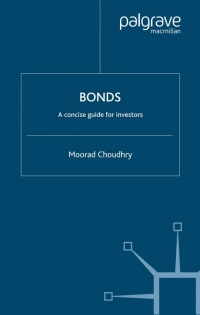Example: Jesper, Inc. provided the following data on its East and West Divisions for last year: East Division West Division Sales $340,000 $1,670,000 Expenses 245,000 1,450,000 Assets, January 1 900,000 2,500,000 Assets, December 31 940,000 2,400,000 Calculate the missing values in the following table! East Division West Division Operating income Average operating assets ROI can be calculated in two different ways. One is to divide operating Income by average operating assets. The second is to calculate margin and turnover and then multiply margin times turnover. For the East Division: Margin = 395,000/$340,000 -0.2794 Turnover - $340,000/$920,000 -0.3696 Margin can be thought of as a percent - that is, margin is the percent return (operating income) on sales. Turnover is just a number, not a percent. It can bethought of as the number of times assets turnover during a year ROI for the East Division - $95,000/$920,000 - 0.1033 or 10.33% or, using margin x turnover: ROI for the East Division - 0.2794 x 0.3696 = 0.1033 or 10.33% ROI for the East Division 0.2794 x 0.3696 = 0.1033 or 10.33% The East Division is earning just over ten percent on its asset or investment base. Calculate the following amounts for the West Division, rounded to four significant digits Margin Turnover ROI or % Clearly the East Division is eaming relately more on its assets than the West Division. How could the West Division increase its ROI? Select all of the following: turnover Suppose that the East Division increased revenue to $350,000 and nothing else changed. What impact would that have on margin and ROI ? turnover Suppose that the East Division increased ending assets to $1,000,000 and nothing else changed. What impact would that have on margin and ROI An advantage of Rot is that it Suppose the East Division manager could increase income to $135,000 (an increase of $40,000) by increasing average operating assets to $1,500,000. Is this a good idea? Economic Value Added (EVA) Economic Value Added (EVA) is similar to residual income in that income is compared to the cost of investment used to earn that income. However, there are some key differences. EVA uses: net (after-tax) income, and the true cost of capital (or investment) rather than some predetermined hurdle rate. If net income is than the cost of capital, the company is said to be creating wealth. If net income is than the cost of capital, the company is said to be destroying wealth Example: Gainer Company has three sources of financing: $3 million of mortgage bonds paying 5 percent interest, $2.5 million of unsecured bonds paying 8 percent Interest, and $4.5 million of common stock, which is considered to be of average risk (with a 6 percent premium). The company's tax rate is 40 percent and the rate of Interest on long-term government bonds is 3 percent. Last year, Gainer Company had after-tax income of $768,000. Fill in the following table to calculate the weighted average percent cost of capital. (Round all decimals to four significant digits.) Amount Percent After-Tax Cost Weighted Cost Mortgage bonds $3,000,000 Unsecured bonds 2,500,000 Common stock 4,500,000 Total The weighted average percent cost of capital is or %. Total cost of capital employed is $ EVA IS Gainer Company is wealth. If Gainer Company's tax rate was 30 percent (assume after-tax income remains the same), EVA would be If Gainer Company had $2.5 million of mortgage bonds and $3 million of unsecured bonds, EVA would be If Gainer Company had $4.5 million of mortgage bonds and $3 million of common stock, EVA would be If Gainer Company was considered more risky than other firms, and the premium on common stock was 8%, EVA would be









